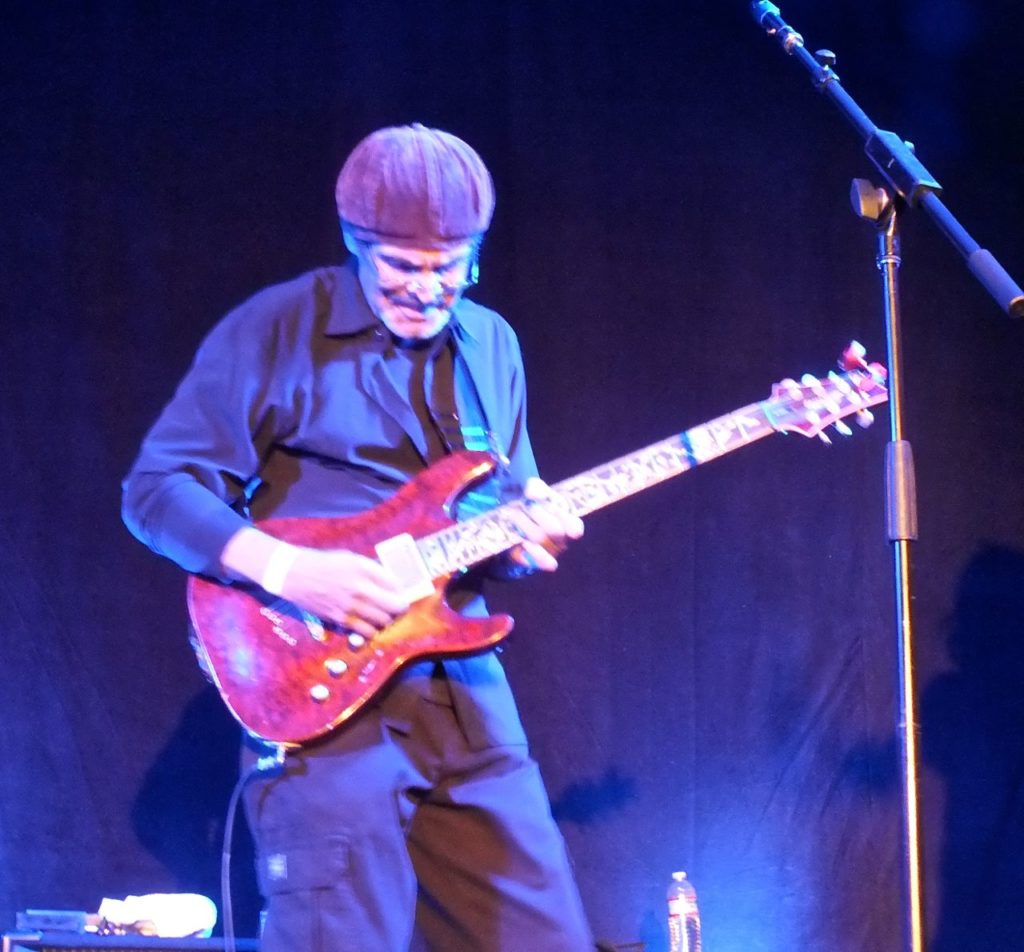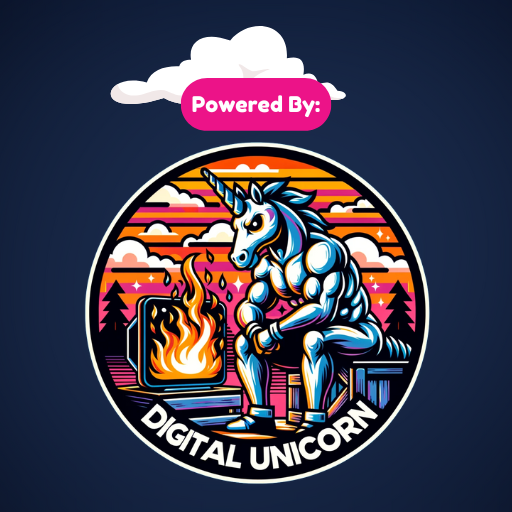Johnny Echols knew from a young age that he loved music. When he was young, his parents, along with his childhood friend Arthur Lee’s parents, moved to Los Angeles where both kid’s parents were teachers. Shortly after that, a neighbor started giving young Johnny guitar lessons and a life-long odyssey bagan. By the time Johnny reached Dorsey High School, friend Arthur had taken up the organ and they started a band. Arthur Lee wanted to spend more time singing, so fellow Dorsey classmate Billy Preston joined the group. By 1963, Johnny had traveled to England as guitarist for Little Richard’s band. When he returned, Arthur Lee and Johnny formed the group ‘Love’, acknowedged as one of the best bands to come out of Los Angeles, one of the creators of L.A.’s psychedelic rock sound and a group who Jim Morrison of the Doors listed as one of his favorite bands.
Their influence has spread to such punk groups as Jesus and Mary Chain, while The Damned have honored ‘Love’ and covered their tunes. Songs like Seven and Seven Is, Little Red Book, Can’t Explain and She Comes in Colors have earned a solid place in American music. One of their albums, Forever Changes, is on Rolling Stone magazine’s 500 Greatest Albums of All Time and has also been inducted into the Grammy Hall of Fame.
Throughout the years, several of the members have died including Arthur Lee, who passed away from acute myeloid leukiemia in 2006. Johnny Echols has weathered the storms, looking trim and happy though these days as he still performs with the group ‘Love Revisited‘. I recently attended a concert and there I sat down with with Johnny, where ‘Love Revisited’ had just played to a crowd that obviously was loving every second of the music.
Q: Johnny, how, after playing those songs for so many years, do you keep them fresh?
A: Well, because they are good songs, number one and we enjoy playing them. But recently, we haven’t played them that often; a couple gigs a month, sometimes fewer, so basically the songs are fresh and now. Because when you’re on the road and you play them every single night you kind of want to switch them up since we’ve got a pretty good catalog of songs that we do. So when we’re on the road every night we’ll switch the songs up, sometimes Rusty will sing the song or I’ll sing the lead. We’ll do things like that to change it up so everyone is kind of on top of it and you don’t ever feel like you know everything. Sometimes you want to stretch a little bit; like one night Rusty does it and the next night I do it. We’re always stretching, always reaching!
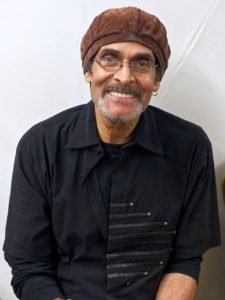 Q: You’re still out playing gigs, you must still love music.
Q: You’re still out playing gigs, you must still love music.
A: Of course, I’m first and foremost a musician and we listen to music all day long and into the night, so music is absolutely THE major part of my life. It’s always on, when we’re in the car, at home, there’s always an instrument around and we’re always listening. I’m really not that conversant on rap and the new music, I like the old school music from the era that I grew up in. I like some of the old school stuff from the Louis Armstrong days, Ma Rainey, Bessie Smith, Billie Holiday and things from that era. I also like some current music, I wouldn’t call him too current but I liked Tupac Shakur. For the most part, though, I’m old school. You know, music you could actually dance to, have fun with. But we also wanted to do music that said something, so we would add words; as I told you before, Arthur was a poet, so music has meaning, it said something, the songs that we did. I’m actually very proud of the catalog that we did create because it has stood the test of time and we have a whole new audience now When we tour and do festivals in Europe, which is where our biggest market is, we go over their and do tours and festivals and a larger part of the audience is under 21 so that’s cool, we really dig that.
Q: You like jazz guitar a lot. Do you find it working it’s way into your rock tunes these days?
A: Yes and no. That’s actually my style, I have kind of a jazzy blues style. There is a bit of rock, but mostly I’m a jazz-blues musician and I kind of go back and forth between the two and I’ve developed my style of play from that. Basically it was jazz and then melding the two, old school blues, because musicians, especially at the time when I was coming up, rock musicians during the ’60s, they wanted to play as many notes as they could and I thought that the music required thought and you wanted to play something that was memorable, you didn’t just want to play a lot of notes for the sake of playing notes. So I consciously developed a style where I wasn’t playing a whole lot, but I was playing what I thought the song required and what added to the vocal because being a musician, and I played a lot of studio work and your job was always to the vocalist, to make the vocalist look as good and sound as good as they could. I kind of brought that over.
The fact that we played clubs around Hollywood and Los Angeles where we were, the house band in fact, we would play for people like ZZ Hill, B.B. King and people like Bobby Bland and all those musicians would come down to the Californian Club and we were part of the backup group. Jimi Hendrix, he was called Jimmy James at the time, he was in that group and also Billy Preston was in that group. We developed a style of play which was basically to compliment the singer and that kind of melded into a style for me.
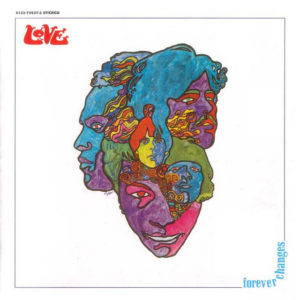 Q: That sounds like one of those kind of groups that if you had a time machine to go back……..
Q: That sounds like one of those kind of groups that if you had a time machine to go back……..
A: We really had fun, Jimi and I, we would do these things—–you see, old R&B guitarists back in the day, they would do the playing behind their backs and around their neck, with their teeth and toes and whatever. That was something that was part of the staple of what was called at the time the chitlin’ circuit, with a guitar player that would really step out front, so Jimi and I developed this style of playing doing that and he took it to just a whole ‘nother level, of course, with the showmanship he developed, but that started in that club circuit called the chitlin’ circuit, that flamboyant guitar player doing all of these tricks and things. It’s easy to do, really, but it looks complicated. If you can play the guitar in front then you can move it around your back—it’s basically the same thing.
Q: What’s your favorite guitar?
A: It would probably be a Les Paul Standard, that would be the favorite guitar to play because I always played Gibsons, mostly over Fenders and I like them because they have shorter scale, just slightly shorter, but it gives you more of a stretch. I can stretch more than I could with the longer Fender scale and so I like Les Pauls and also the double-neck that I played that was called a Nando guitar, the first one and then Mosrite guitars started and we endorsed them. They made guitars specifically for me and made a double-neck that I played quite often. I played a Stratosphere, a double-neck that was probably the first double-neck other than country music—-Joe Maphis played one, but I think I was probably the first rock musician playing one. I was still in high school, in 1963, and I was playing one of those before any other musician was playing it. That would be my favorite two, the double-neck and the Les Paul.
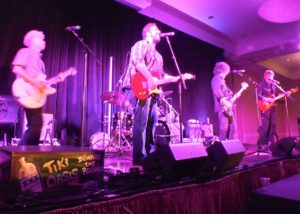 What about the guitar you were playing at the show?
What about the guitar you were playing at the show?
A: That was a custom guitar, made by Schecter Research, the custom division of Schecter. I was working out an endorsement deal with them and we got ahold of some old 1959 Les Paul pickups and they incorporated them into the guitar I play now. We didn’t work the deal out becauae they wanted me to play their instruments and at times, especially in studio work, you need different instruments and you can’t just tie yourself up to one specific brand of instrument so I didn’t work out the deal. But I got to keep the prototype, which is what I was playing. It looks sort of like a Fender but it actually has the shorter scale and it has the vine, like the old Martins had the vine inlay from mother-of-pearl and abalone, an inlay that goes all up and down the neck. It’s a wonderful instrument to play, it looks like a very sensual guitar but it plays very much like an old Les Paul. It’s a neat axe.
Q: How about a cool little story about coming up in the ’60s?
A: Well we did quite a bit of studio work back then, I played a lot with Glen Campbell and the Bobby Fuller Four, they were all part of the Delphi group, sold more records on Delphi which was Bob Keane. They were the label that did Richie Valens and Donna so we did a lot of work there. A lot of the studio records from that era that we may have heard we might haver played on, like The Jerk from Don Julian and the Meadowlarks, it was a pretty big hit. I also played a lot with Phil Spector, who was recording mostly at Gold Star Studio there on Santa Monica in Hollywood. Sonny Bono worked with Spector, but he was the ‘gofer’—he was Phil Spector’s ‘gofer’, the guy who went in and got instruments or went out and got coffee, bought lunch and all of that. He had a group with Cher, it was called ‘Caesar and Cleo’ and he had kind of a Julius Caesar hairdo, you know that bowl haircut around it and she had her long black hair. I’m not certain if they were released, but they had several records under the name of ‘Caesar and Cleo’.
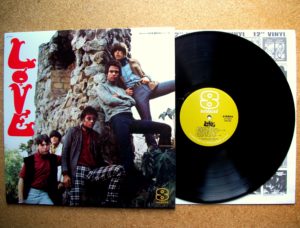 Q: The crowd really loves you guys and goes crazy during your sets. Does it still feel great to do that to people?
Q: The crowd really loves you guys and goes crazy during your sets. Does it still feel great to do that to people?
A: Oh, it feels fantastic. That’s why I do it, its the reaction of the people and to be a part of that moment in time where everybody is on the same page, everybody is listening and we’re playing and you’re touching people. It’s so neat to be able to play something and see it in their faces, ‘cuz I’m looking out at the audience. You can see when this song brought back a memory of a specific time or something that happened to that person then and they’re mouthing the words, they’re singing along with us and it’s such a neat feeling to have that comraderie, that brotherhood, that feeling of oneness that you get. And also just to be able to do something that you love doing and that’s on the stage and to receive all the good feelings —-it’s just indescribable, really. Unless you’re doing it, it’s hard to describe how it feels to be there and receive all of those wonderful vibes, you know, people just giving you love. And there’s good feelings there, there is no negativity, just good feelings and you’re forgetting all about the hassles of the day and all the problems. You’re just there to enjoy yourself and have a good time and relate to another human being. I think there’s nothing more special than that. Two human beings or a thousand human beings, just relating to each other, just being; people who have no ulterior motive, nothing but to just enjoy that moment in time. That’s really special. That’s why were here, to relate to each other in a positive way and just enjoy it.
As Johnny Echols relaxed after the show, you could tell by his face that although he had a workout, he had loved every minute of it. It was obvious after talking to him that not only did he survive the ’60s, but Johnny Echols still has the musical chops to keep bringing fresh, creative guitar sounds to audiences for some time to come.

